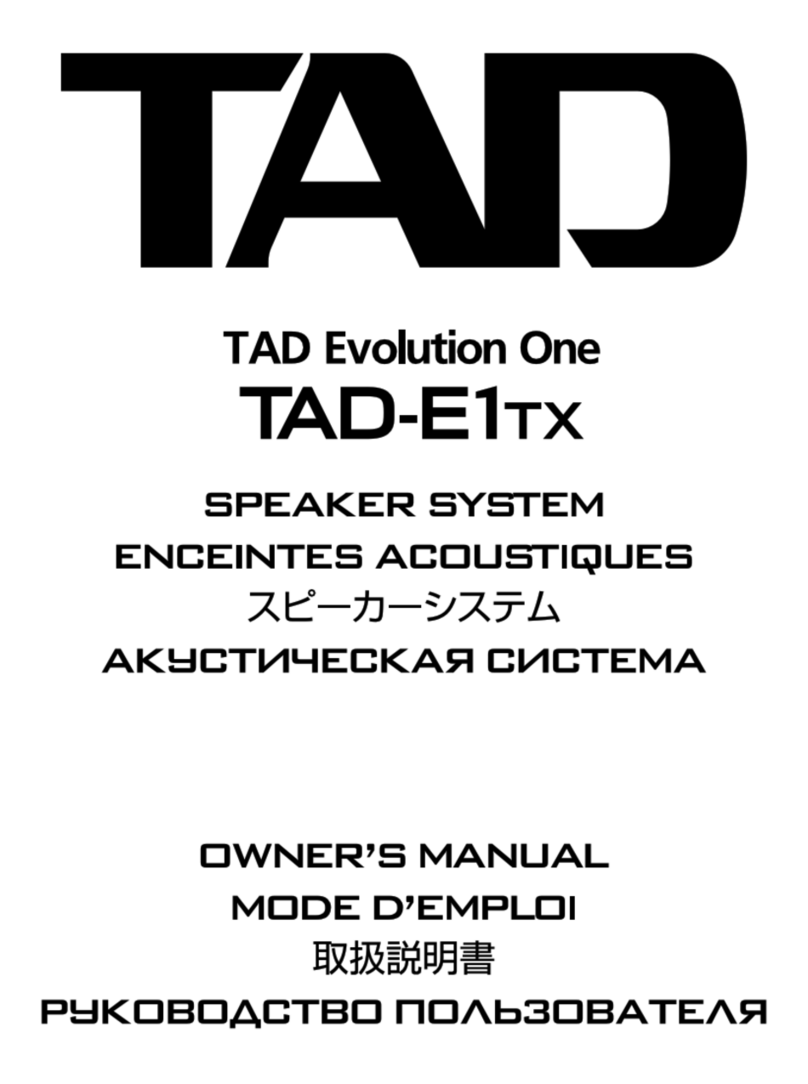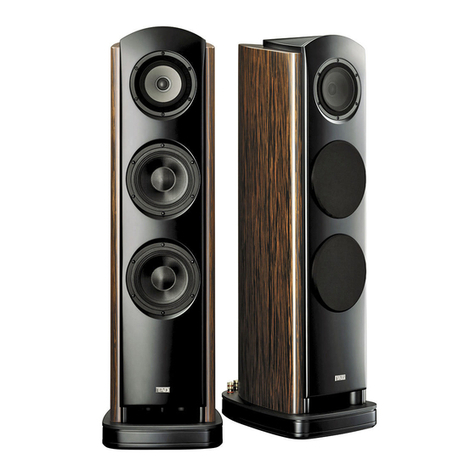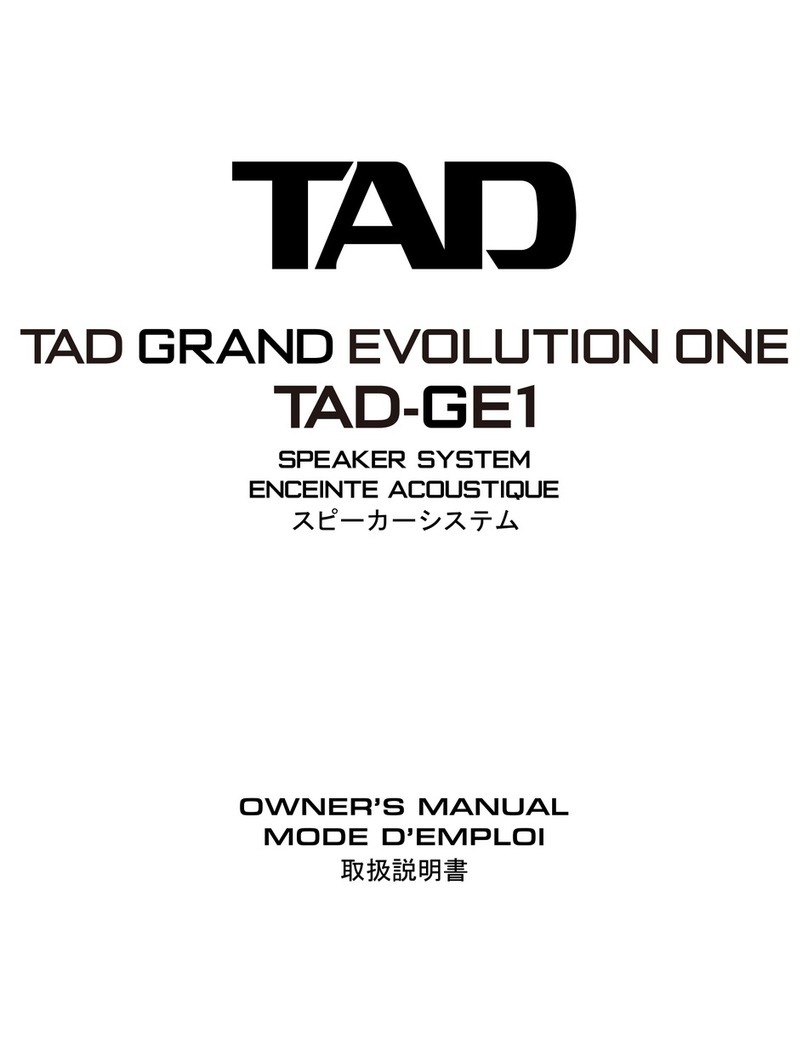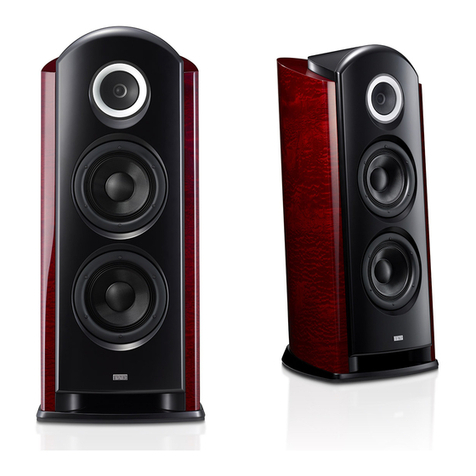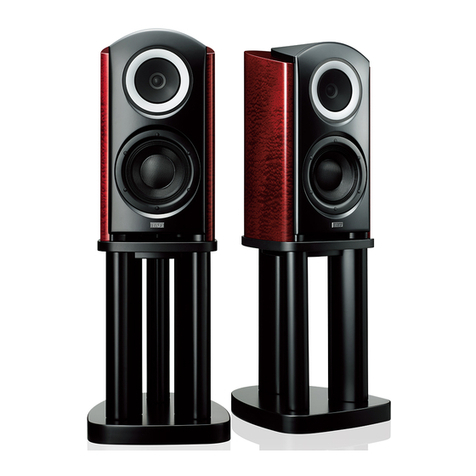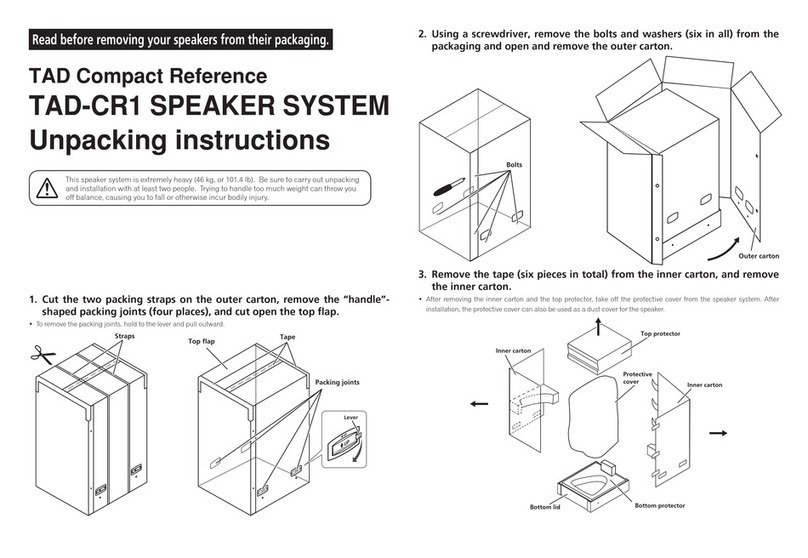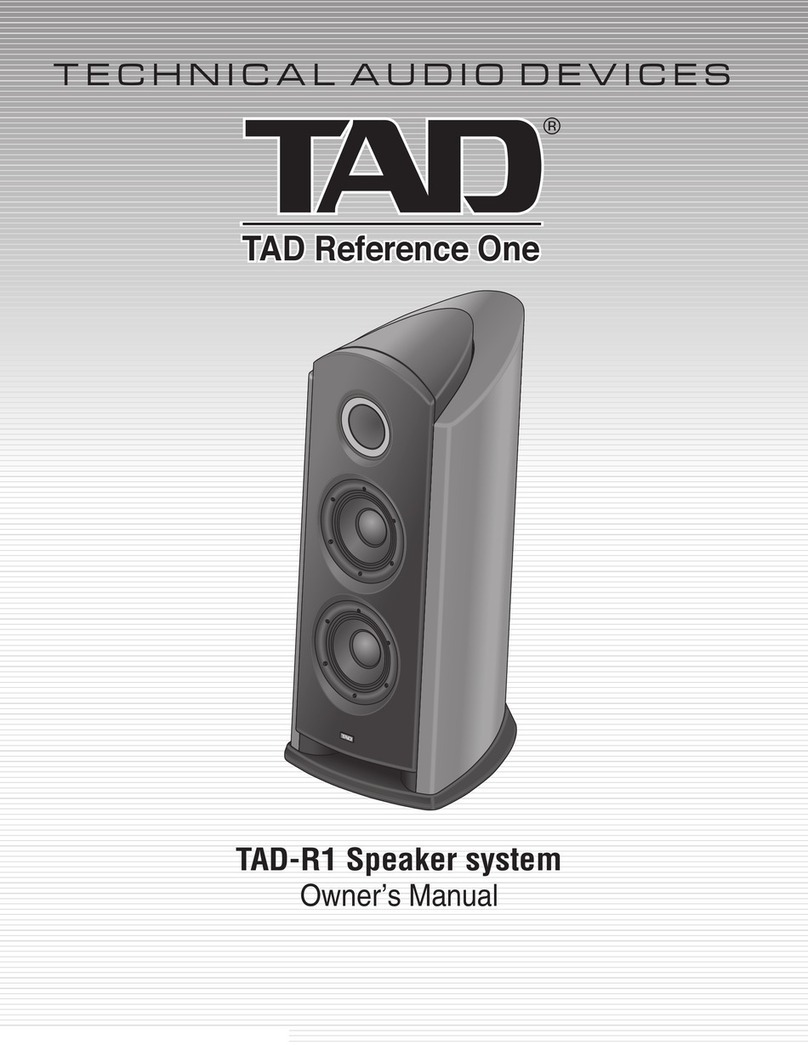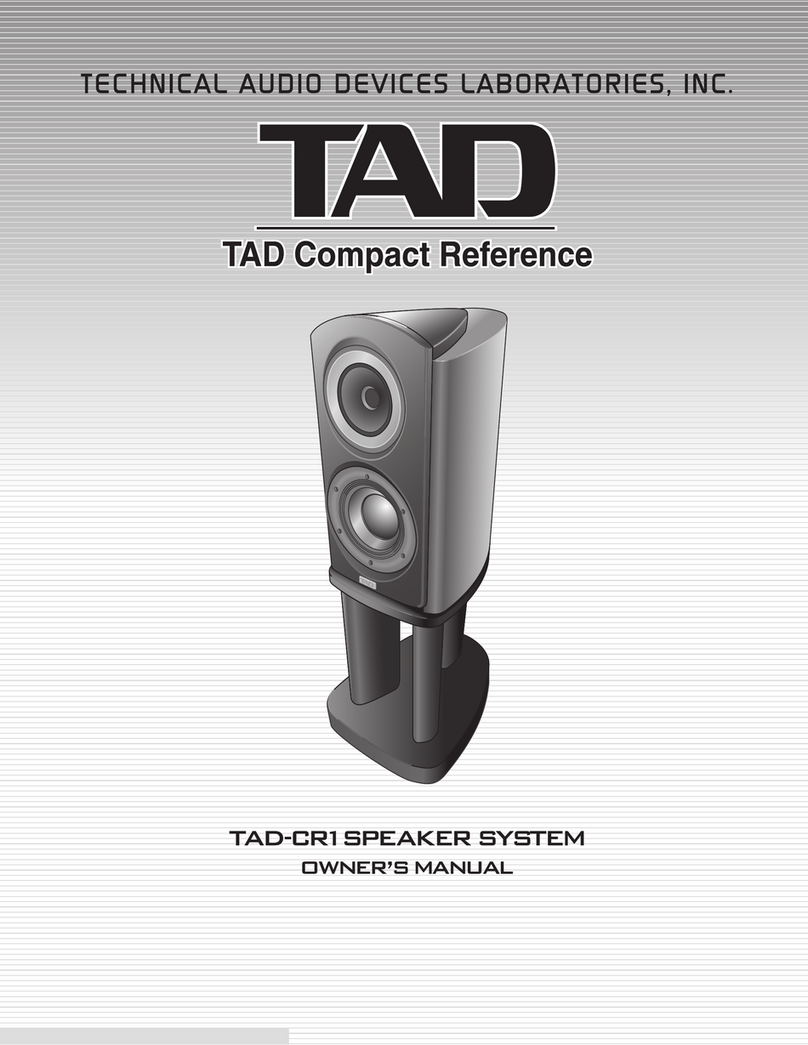
4
Inspiring the joy of listening
Technical Audio Devices Laboratories, Inc. (TADL) grew from
the spirit to discover technologies to perfectly recreate the pure
sound of life performances with uncompromising craftsmanship.
We have inherited our philosophy from Bart Locanthi –recognized
across the globe as the ultimate sound technologist–who
believed that genuine technology is true to the basic and that
genuine technology places greater importance on sound quality
than on technology for its own sake. At TADL, we are honing our
technology to create equipment that reproduces musical sounds
that evoke both the energy and impact of life music.
TAD Compact Evolution One Features
TAD-CE1 is the speaker system by using the accumulated
acoustic technology in TAD’s past history and advanced
audio technology in order to realize the emotional sound.
1. Coaxial speaker unit with “CST*1 driver”
The heart of the system is the Coherent Source Transducer
(CST). The tweeter diaphragm is mounted concentrically
within the midrange cone and provides a point source of
sound from 250 Hz to 100 kHz. It results in creating both time
coherency and matched directivity between the midrange
and tweeter, producing superbly-controlled radiation patterns
and ensuring a perfect spectral balance between the direct
and reflected sounds arriving at the listener’s ears. The result
is more consistent sound throughout the listening room and
improved imaging capability. By mounting this unit in the
perfectly shaped enclosure, the CST driver is provided with
optimum conditions for producing the utmost in performance.
2. Beryllium tweeter and magnesium midrange
diaphragms
The tweeter features a light-weight, highly rigid beryllium
diaphragm. Utilizing our proprietary vapor-deposition process.
The combination of stiffness, low mass, and high internal
damping ensures that the diaphragm resonances are well
controlled and placed well above the range of audibilty.
Magnesium is utilized for the midrange diaphragm. It’s
combination of stiffness, low mass and durability ensure
that the midrange is similarly reproduced with freedom from
resonace and distortion.
INTRODUCTION
3. Woofer designed with MACS*2 diaphragm
The woofer is equipped with a MACS diaphragm, constructed
from numerous layers of laminated aramid fibers, producing
low mass and high rigidity. The shell-type one-piece cone/
center-dome construction produces luxuriantly deep bass
with scintillatingly clear mid-range sounds.
4. “SILENT*3 Enclosure” for low resonance
The cabinet is constructed of high-rigidity Baltic birch plywood
combined with MDF for high internal loss, achieving a “SILENT
Enclosure” that combines high strength with low resonance.
In addition, unneeded cabinet vibrations are suppressed by
sandwiching the speakers between 10 mm-thick high-rigidity
aluminum walls.
5. “Bi-Directional ADS *4 port”
The bass reflex port has been integrated into the enclosure
side of the speaker. The port opening is designed as horn-
shaped slits located front-back and right-left, allowing the
speaker to reproduce natural and luxuriant low-frequency
sound even though a compact bookshelf-type speaker design.
By eliminating unnecessary noise from the port and the
influence of internal standing waves, the speaker produces
clear bass sound with excellent response.
*1 CST: Coherent Source Transducer
*2 MACS: Multi-layered Aramid Composite Shell
*3 SILENT: Structurally Inert Laminated Enclosure Technology
*4 Bi-Directional ADS: Bi-Directional Aero-Dynamic Slot
